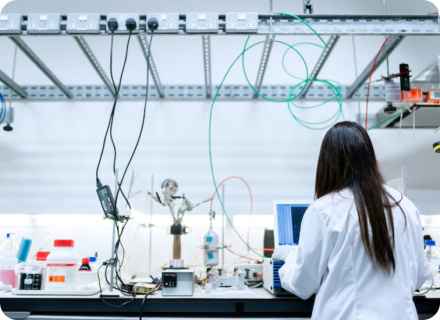In mid-XIXth century Vienna, Ignaz Semmelweis found that washing hands in obstetrical clinics drastically reduced mortality, and lost his life in the struggle to make doctors wash their hands. His contemporaries ignored his findings, and only decades later, when the germ theory of disease was accepted, doctors began washing their hands regularly. How many people lost their lives as a result?
The use of disease-transmitting precautions in healthcare has not been limited to washing hands. In fact, use of universal precautions in hospitals has been the building block of prevention of iatrogenic (“harm caused by the healer”) infections. From wearing aprons to use of masks to hand washing, the ethics of practice of medicine demands that the processes are followed daily and rigorously. It is not permissible for physicians to harm their patients—not by ignorance, not by willful negligence.
Thomas Sydenham, who was among the first to describe scarlet fever and named it in 1676, was called ’“the English Hippocrates.” He translated the “Primum Est Ut Non Nocere”: it is important above all not to do harm. This was simplified by an American surgeon around 1879 to Above All, do no harm (“Primum Non Nocere”), as is well-known and repeated in healthcare. This can be added to the common knowledge behind the precautionary principle: “prevention is better than cure”. So, it is not surprising that the beginning of the last century saw the use of precautions in mitigating the impact of Spanish Flu, including masks, whatever the make or quality, and improved ventilation. The century before saw humanity move to clean water, which was also fought by many professionals of that time.
We could expect that by the XXIst century things would have improved. Perhaps they have, but not enough. In spite of ample evidence of the successful prevention of contagion using face masks, the importance of wearing masks is not adequately recognized even among doctors.
After the SARS outbreak twenty years ago, citizens of some of the affected countries began wearing masks much more often than before: if they had a respiratory infection, so as not to spread it to others, or if they were in crowded places, to reduce the risk of being infected. In recent days, when smoke from wildfires spread through Northeast North America, authorities were clear about the need for N95 respirator protection, and many members of the public, who otherwise were not using them, found them helpful in protecting themselves from a threat that was easier to recognize.
The use of masks for different purposes is widely understood. This includes the importance of respirators to prevent breathing in airborne particles. Surgical masks are tested to resist splashes of blood and other body fluids, including large droplets, but according to the US Food and Drug Administration (FDA) “do not provide a reliable level of protection from aerosolized particles because of the loose fit.” Respirator masks are tested both by the FDA and by CDC’s National Institute of Occupational Safety and Health (NIOSH) for their ability to prevent breathing in airborne particles.
During the COVID-19 pandemic, most of us learned to wear facemasks, and we might estimate that they prevented millions of deaths worldwide. But they are effective not only against SARS-CoV-2, but to prevent the contagion of all respiratory diseases. Why should we ignore such a simple and low cost technology, which can be easily available?
Doctors, and other healthcare professionals, deal with an unending line of patients and may not always have the time or ability to continuously practice the highest levels of infection prevention. Under such stress, sometimes physicians fail to follow novel scientific findings on their own and are unaware of the risks they may be exposing themselves and their patients to in the absence of organized physician information campaigns. Or they may just give up against the peer pressure of those fighting any mitigation. But this is not the answer. Asymptomatic / presymptomatic transmission is exactly the circumstance where the risk cannot be known from immediate information. It is simply wrong to think these risks should be accepted when they can be so easily mitigated.
While most of the research documents the effectiveness of masks in preventing infection, masks are also being perceived as signaling political stances. This has likely influenced healthcare workers, including doctors, even though the value of patient protection should transcend politics. Doctors are seen as role models, whose behavior encourages or discourages others from taking similar actions. In implementing patient protection, these “social signals” can be as important as knowledge of their necessity.
Taking precaution against infection is a necessary part of the job, and being vigilant and informed is important to help protect their patients and colleagues. This is clear from Hippocrates to the German “Vorsorgeprinzip,” that combines prevention and avoidance of harm, to the modern Precautionary Principle. Practitioners should not ignore evidence that masking reduces the risk to patients and caregivers. They should be aware of the risks of (repeated) COVID infection, both in order to effectively diagnose and treat patients with a history of COVID, and to understand why protection is necessary. They should take into account the high rates of infection (and significant mortality) among healthcare and other frontline staff due to the pandemic. Even small steps, such as wearing a mask, just as with Semmelweis’ washing of hands, go a long way in reducing the risk of spreading disease.
We must both improve relevant knowledge and cultivate a culture of mask-wearing among doctors, so that the general public can have competent care and an example to emulate. By doing so we can protect our patients, and ourselves, from unnecessary harm due to contagion. Only through the uptake of a culture of universal precautions can we build a healthier world.
REFERENCES:
- Kadar N. Rediscovering Ignaz Philipp Semmelweis (1818-1865). Am J Obstet Gynecol. 2019 Jan;220(1):26-39. doi: 10.1016/j.ajog.2018.11.1084. Epub 2018 Nov 13. PMID: 30444981. https://pubmed.ncbi.nlm.nih.gov/30444981/
- Attfield, R. To Do No Harm? The Precautionary Principle and Moral Values. Philos. of Manag. 1, 11–20 (2001). https://doi.org/10.5840/pom2001133.
- Hajar R. The Physician’s Oath: Historical Perspectives. Heart Views. 2017 Oct-Dec;18(4):154-159. doi: 10.4103/HEARTVIEWS.HEARTVIEWS_131_17. PMID: 29326783; PMCID: PMC5755201. https://www.ncbi.nlm.nih.gov/pmc/articles/PMC5755201/
- Rain Wuyu Liu, Ying Cheng & Taylor Ann Foerster (2023) Modeling the Relationship Between Perceived Descriptive Norms and Willingness to Practice COVID-19 Preventative Behaviors: A Test of the Mediation and Moderation Mechanisms in the Theory of Normative Social Behavior, Health Communication, DOI: 10.1080/10410236.2023.2165257 https://www.tandfonline.com/doi/abs/10.1080/10410236.2023.2165257
- Hill LM, Davis H, Drewry M, Shelus V, Bartels SM, Gora Combs K, Ribisl KM, Lazard AJ. Barriers to and Facilitators of COVID-19 Prevention Behaviors Among North Carolina Residents. Health Educ Behav. 2022 Apr;49(2):231-241. doi: 10.1177/10901981221076408. Epub 2022 Feb 22. PMID: 35189728; PMCID: PMC9008556. https://pubmed.ncbi.nlm.nih.gov/35189728/
- Lu JG, Jin P, English AS. 2021. Collectivism predicts mask use during COVID-19. PNAS 118(23):e2021793118 https://www.pnas.org/doi/10.1073/pnas.2021793118
- Fox, Greta, Špela Šalamon, Luis Eugenio de Souza, Andrew Ewing, Matti TJ Heino, Stephane Bilodeau, Carlos Gershenson, Eric Feigl-Ding and Yaneer Bar-Yam. “The Case for Keeping Masks Mandatory in Health Care.” WHN Science Communications, Vol 4, Issue 5, p. 1 (2023) https://doi.org/10.59454/whn-2305-586


